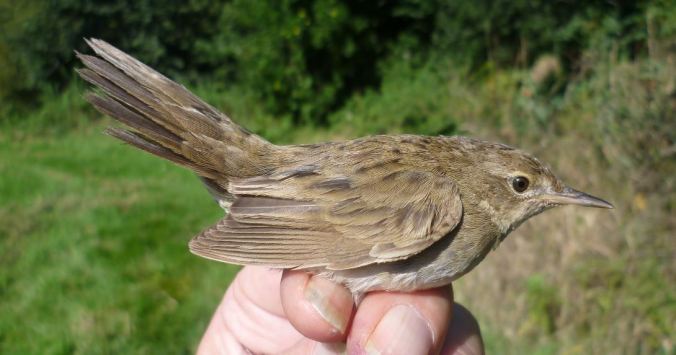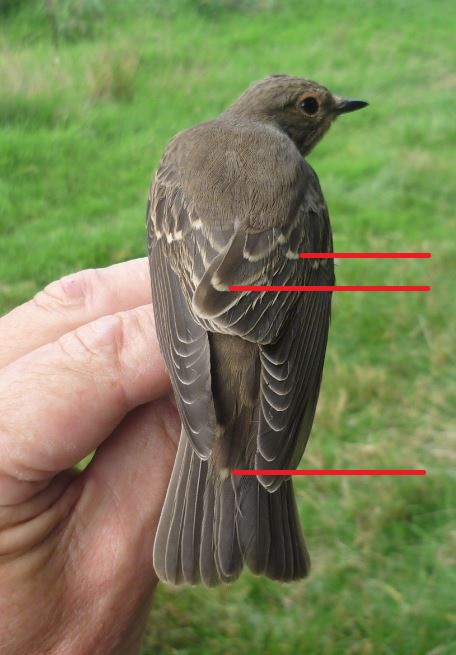
Apparently, SML was crawling with birds on Thursday but, by the time I arrived early on Friday morning, after a clear moonlit night with low winds, everything had moved on. That’s life! I live too far away to get there every day and, with 460 miles of commuting to and from the site in August, cost is an issue as well. Anyway, it was a pleasant sunny day with a steady trickle of birds and a good selection of warblers, the best of which was an adult Grasshopper Warbler. Unlike young Groppas in the autumn, which are in pristine plumage, the adults are worn and tatty and this bird was no exception. (See the extensive wear to the tail feathers and the distinctive undertail coverts below).

I did spot that it had moulted some body feathers and the two inner tertials, which, for me, feels like an achievement!

The upper arrow shows new feathers on the mantle, the lower arrow the new middle tertial – broader and darker than the old outer one.
44 birds were trapped: 3 Blackbird, 18 Blackcap, 1 Chiffchaff, 1 Garden Warbler, 1 Grasshopper Warbler, 5 Reed Warbler, 2 Sedge Warbler, 1 Whitethroat, 7 Willow Warbler and 1 Wren.





